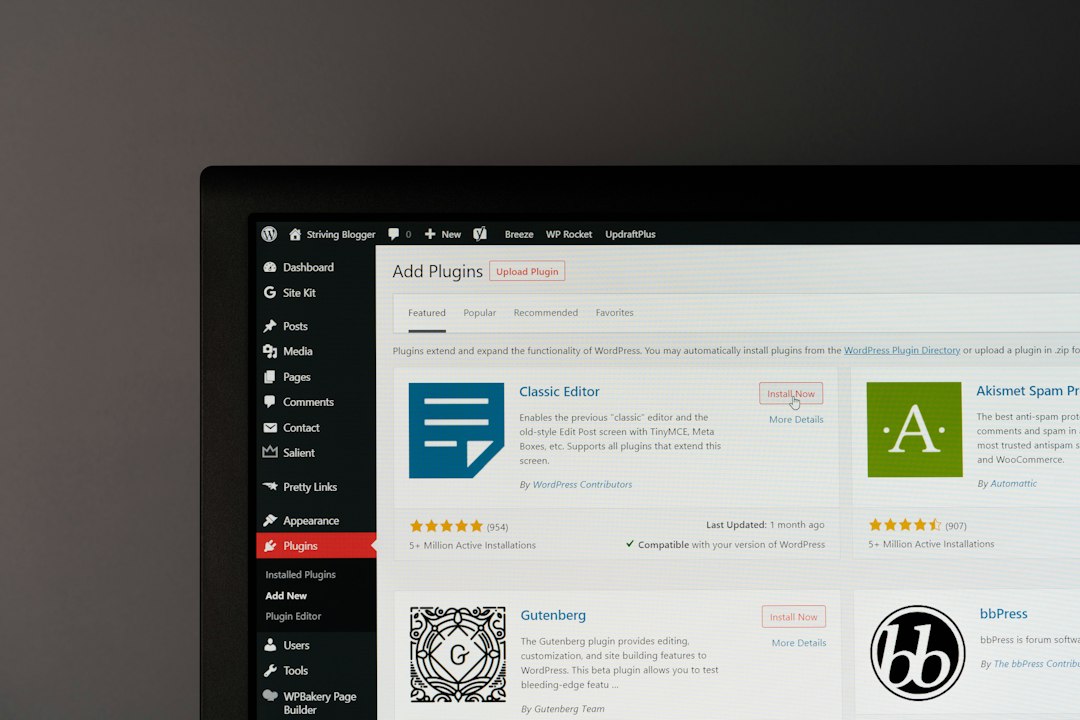Physical Address
304 North Cardinal St.
Dorchester Center, MA 02124
Physical Address
304 North Cardinal St.
Dorchester Center, MA 02124

In today’s fast-paced digital world, time is of the essence. Whether you’re a beginner or an experienced user, finding ways to save time and increase efficiency is crucial. This is especially true when it comes to managing a WordPress site. Thankfully, there are numerous time-saving tips and tricks that can help streamline your workflow and improve productivity.
Using time-saving tips and tricks in WordPress offers several benefits. First and foremost, it allows you to accomplish more in less time. By implementing these strategies, you can automate repetitive tasks, reduce manual work, and focus on more important aspects of your website.
Additionally, time-saving tips and tricks can help improve the overall efficiency of your WordPress site. By optimizing your site’s performance, streamlining content creation, and implementing SEO strategies, you can enhance user experience and attract more visitors.
For beginners, setting up a WordPress site can seem overwhelming. However, with a few essential tips, you can get started on the right foot.
Firstly, choose a theme that aligns with your website’s purpose and design preferences. There are thousands of free and premium themes available in the WordPress theme directory. Take your time to explore different options and select a theme that suits your needs.
Next, install essential plugins to enhance the functionality of your site. Plugins are like apps for your WordPress site, allowing you to add features such as contact forms, social media integration, and SEO optimization. Some popular plugins include Yoast SEO, Contact Form 7, and Jetpack.
Lastly, familiarize yourself with creating pages and posts in WordPress. Pages are static content such as About Us or Contact pages, while posts are dynamic content that appear in reverse chronological order on your blog page. Learn how to create and edit both pages and posts to start building your website.
Once you’ve mastered the basics, it’s time to dive into more advanced tips and tricks to take your WordPress site to the next level.
One advanced technique is using custom post types and custom fields. Custom post types allow you to create different types of content beyond just pages and posts. For example, you can create a custom post type for testimonials or portfolio items. Custom fields, on the other hand, allow you to add additional data to your posts or pages. This can be useful for adding metadata or organizing content.
Another advanced tip is to leverage advanced plugin usage. Many plugins offer additional features and settings that can be customized to suit your specific needs. Take the time to explore the options available in your installed plugins and experiment with different settings to optimize their functionality.
A slow-loading website can be frustrating for visitors and negatively impact your search engine rankings. To improve your site’s performance, consider implementing the following WordPress tricks.
Firstly, enable caching on your site. Caching allows your website’s pages to be stored as static files, reducing the need for dynamic generation with each page load. This can significantly speed up your site.
Secondly, optimize your images. Large image files can slow down your site’s loading time. Use image optimization plugins or tools to compress and resize images without sacrificing quality.
Lastly, minimize HTTP requests by combining CSS and JavaScript files. Each file request made by a visitor’s browser adds to the loading time of your site. By combining multiple files into one, you can reduce the number of requests and improve site speed.
Creating high-quality content is essential for any successful website. However, it can be time-consuming. To streamline your content creation process, consider implementing these time-saving tips.
Firstly, use templates for common content elements such as headers, footers, and sidebars. By creating reusable templates, you can save time by not having to recreate these elements for each page or post.
Secondly, take advantage of batch editing. WordPress allows you to edit multiple posts or pages at once, saving you time and effort. This is particularly useful when making global changes such as updating categories or tags.
Lastly, schedule your posts in advance. Instead of publishing content immediately, schedule it to be published at a later date and time. This allows you to create content in batches and have a consistent publishing schedule without having to manually publish each post.

Search engine optimization (SEO) is crucial for driving organic traffic to your website. To optimize your WordPress site for SEO, consider implementing the following tips and tricks.
Firstly, conduct keyword research to identify the most relevant and high-performing keywords for your content. Use tools like Google Keyword Planner or SEMrush to find keywords with high search volume and low competition.
Secondly, optimize your on-page elements such as title tags, meta descriptions, and headings. Include your target keywords in these elements to improve your site’s visibility in search engine results.
Lastly, focus on building high-quality backlinks to your site. Backlinks are links from other websites that point to your site. They are an important ranking factor for search engines. Reach out to relevant websites in your industry and ask for backlinks or consider guest posting on other blogs to build links.
Customizing your WordPress theme allows you to create a unique and personalized website. To customize your theme effectively, consider implementing the following tips and tricks.
Firstly, use child themes instead of modifying the parent theme directly. Child themes allow you to make customizations without affecting the original theme’s code. This ensures that your customizations are not lost when the theme is updated.
Secondly, use custom CSS to make visual changes to your theme. CSS is a coding language that controls the appearance of your website. By adding custom CSS, you can modify colors, fonts, and other visual elements without altering the theme’s core files.
Lastly, consider using a theme framework. Theme frameworks provide a solid foundation for building custom WordPress themes. They often come with pre-built templates and functionality that can save you time and effort in creating a custom design.
Plugins are an essential part of any WordPress site, offering additional functionality and features. To improve efficiency and productivity, consider installing the following essential plugins.
Firstly, backup plugins are crucial for protecting your website’s data. They allow you to create regular backups of your site’s files and database, ensuring that you can restore your site in case of any issues or data loss.
Secondly, security plugins help protect your site from hackers and malware. They offer features such as firewall protection, malware scanning, and login security measures to keep your site safe and secure.
Lastly, automation plugins can help streamline repetitive tasks. These plugins automate processes such as social media sharing, email marketing, and content distribution, saving you time and effort.
Managing a WordPress site involves various tasks such as content creation, maintenance, and updates. To streamline your workflow and manage your site more efficiently, consider implementing the following tips.
Firstly, use project management tools to keep track of tasks and deadlines. Tools like Trello or Asana allow you to create boards or lists to organize your projects and collaborate with team members.
Secondly, delegate tasks whenever possible. If you have a team or collaborators working on your site, assign specific tasks to individuals to distribute the workload and ensure efficient completion.
Lastly, automate workflows using tools like Zapier or IFTTT. These tools allow you to create automated actions based on triggers, such as automatically sharing new blog posts on social media or sending email notifications for new leads.
In conclusion, using time-saving tips and tricks in WordPress is essential for improving efficiency and productivity. Whether you’re a beginner or an experienced user, implementing these strategies can help streamline your workflow, optimize your site’s performance, and enhance the overall user experience.
From setting up your WordPress site to customizing your theme, optimizing for SEO, and managing your site efficiently, there are numerous tips and tricks available to help you save time and achieve effortless excellence in WordPress.
Take the time to explore these strategies and implement them into your WordPress workflow. By doing so, you can unlock the full potential of your website and achieve success in the digital world.
If you’re looking to enhance the security of your WordPress website, you might find our related article on “Cracking the Code: Unraveling the Mystery of WordPress Security” helpful. This in-depth guide explores advanced tactics and strategies for webmasters to protect their websites from cyber threats. From debunking common misconceptions to implementing proactive measures, this article provides valuable insights into fortifying your WordPress fortress. Check it out here.
WordPress is a free and open-source content management system (CMS) that allows users to create and manage websites without any coding knowledge.
Some time-saving tips for WordPress users include using keyboard shortcuts, scheduling posts in advance, using templates and plugins, and automating tasks with tools like Zapier.
To improve your WordPress website’s performance, you can optimize images, use a caching plugin, minimize HTTP requests, and choose a reliable hosting provider.
Some common WordPress security issues include weak passwords, outdated software, vulnerable plugins and themes, and brute force attacks.
To secure your WordPress website, you can use strong passwords, keep your software and plugins up to date, use a security plugin, and limit login attempts. You can also use SSL certificates and two-factor authentication for added security.
Some popular WordPress plugins include Yoast SEO, Jetpack, Contact Form 7, WooCommerce, and WPForms. These plugins can help with SEO, website performance, contact forms, e-commerce, and more.